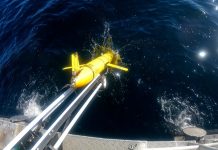LignoSat2, the first wooden artificial satellite developed by Kyoto University’s Space Wood Laboratory is scheduled to be jointly launched by JAXA and NASA this year will have outside structure made of Magnolia wood.
It will be a small-sized satellite (nanosat).
Kyoto University Space Wood Laboratory has chosen Magnolia for its relatively high workability, dimensional stability, and overall strength.
The idea is to demonstrate that the wood can be used in space.
Earlier, a project led by Kyoto University tested and confirmed the high wood durability of space wood at the International Space Station (ISS). The experiment showed minimal deterioration and good stability of the samples selected for the wooden artificial satellite.
The research group conducted a preliminary inspection involving strength tests and elemental and crystal structural analyses after astronaut Koichi Wakata returned the wood sample to the Earth.The tests confirmed no decomposition or deformations, such as cracking, warping, peeling, or surface damage despite the extreme environment of outer space involving significant temperature changes and exposure to intense cosmic rays and dangerous solar particles for ten months. The three wood specimens showed no deformation after space exposure.The experiment results also confirmed no mass change in each wood specimen before and after space exposure. Based on these results, the research group decided to use Magnolia wood.
LignoStella Space Wood Project was jointly launched by Kyoto University and Sumitomo Forestry in April 2020. The space exposure tests were conducted for over 240 days in 2022 on the Japanese Experiment Module Kibo of the ISS.
Use of wood in space is more sustainable. When dropped from orbit into the upper atmosphere, it degrades completely without any harmful byproducts.
***
References:
- Kyoto University. Research news – Sampling for sustainability in outer space. Published 25 January 2024. Available at https://www.kyoto-u.ac.jp/en/research-news/2024-01-25-0
- Kyoto University. Research news – Space: the wooden frontier. Kyoto University to test slats of wood aboard Japan’s Kibo platform on the ISS. Published 31 August 2021. Available at https://www.kyoto-u.ac.jp/en/research-news/2021-08-31
- NanoSats Database. LignoSat. https://www.nanosats.eu/sat/lignosat
***




































